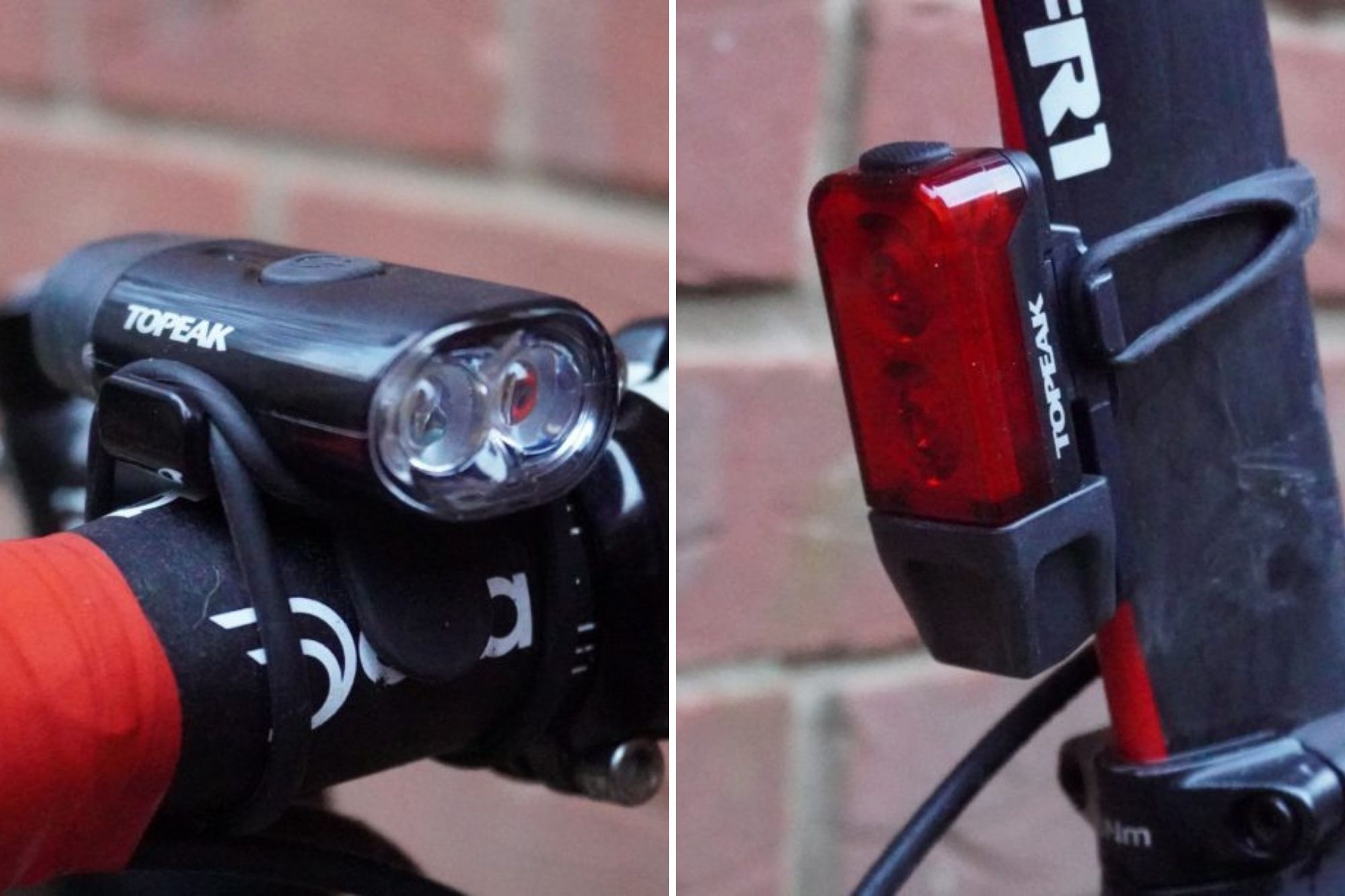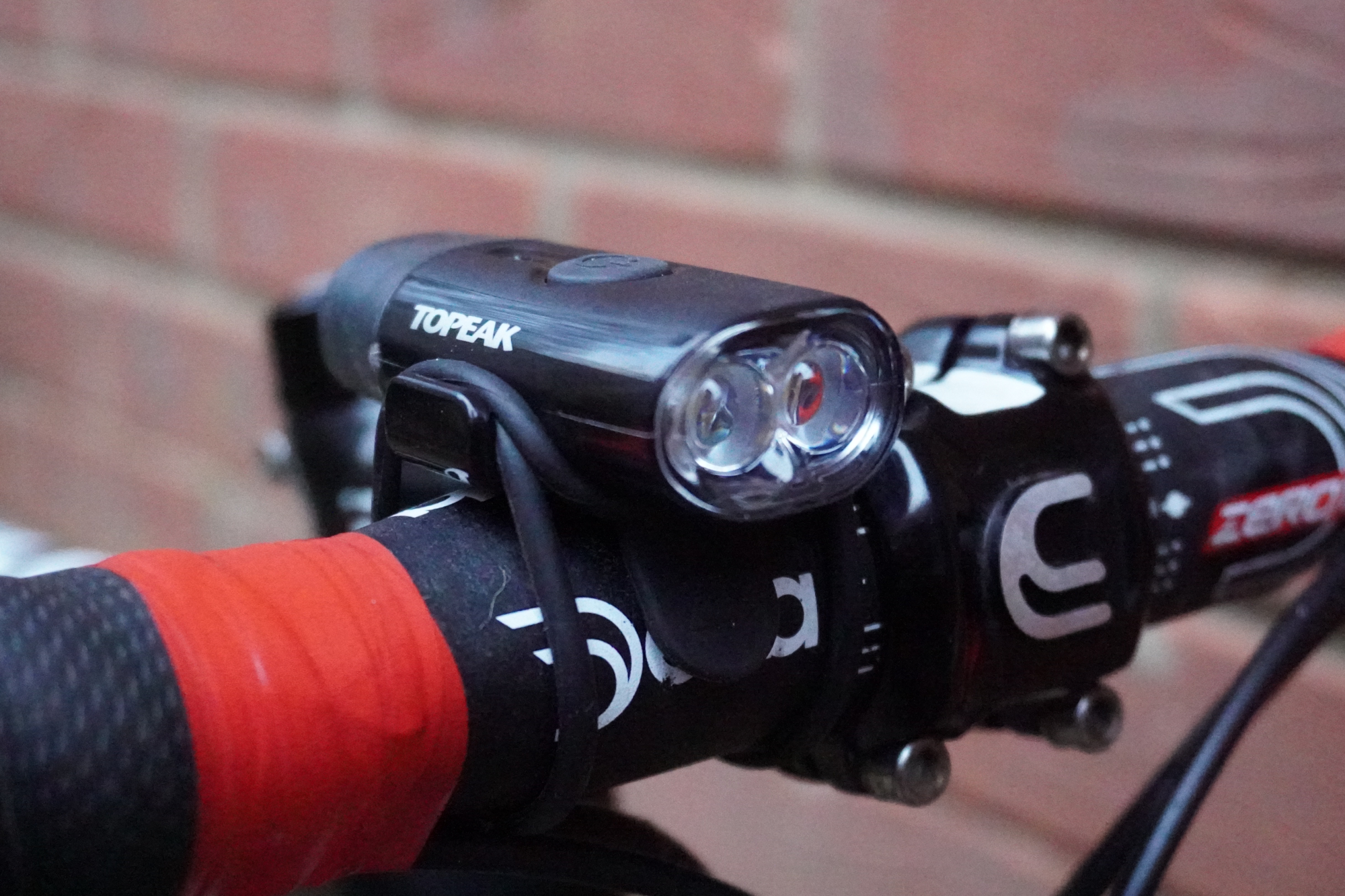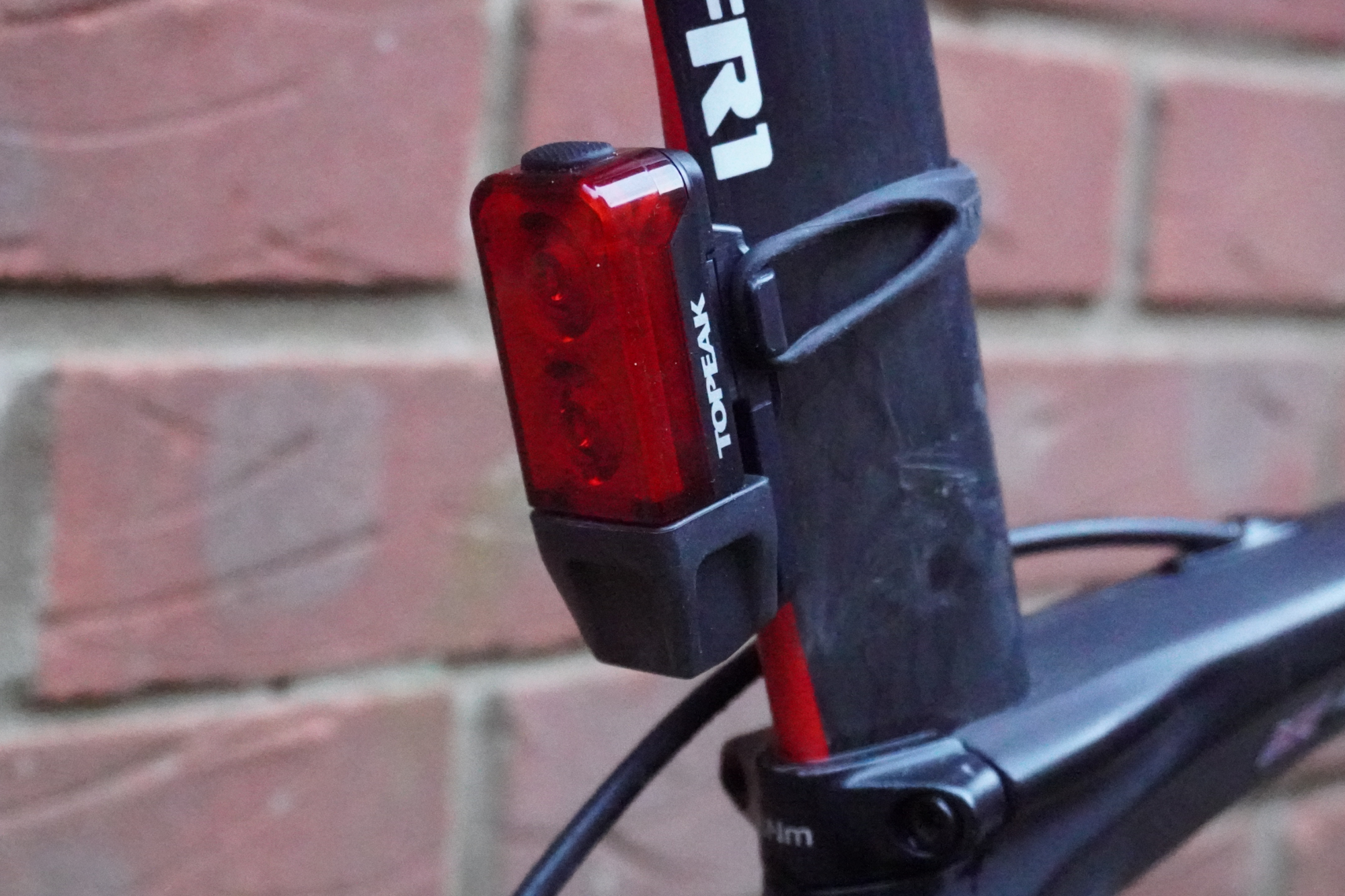Topeak Powerlux USB Combo review
A compact lightset designed for being seen, rather than for seeing. Built-in USB charging means you don’t have to worry about forgetting a cable.

The Topeak Powerlux USB Combo is a small, but powerful, lightset designed for being seen0. The burn time is respectable and built in USB chargers mean you don’t have to remember a cable in order to top them up. There are only three modes, and I found the third flashing setting to be obnoxiously fast, which meant I stuck with the solid beam modes. A slower flash, or even an additional mode, would be an improvement.
-
+
Compact size
-
+
Built in USB charger
-
+
Tool free mounting
-
-
Flash settings distractingly fast
-
-
Rubber cap of the front light is hard to take off
-
-
Unintuitive front light mount
You can trust Cycling Weekly.

The Topeak Powerlux USB Combo lights are intended to increase visibility for night time city riding as well as during the daytime.
>>>Read more: Best bike lights
But do bear in mind that, although 100 lumens is fairly bright, you would still want something with more power for riding unlit country lanes, we usually suggest 500 lumens as a starting point, though around 1,000 lumens will allow you to ride at with a similar level of speed and confidence as you might during daylight.
This set definitely falls into the “for being seen” end of the spectrum, as opposed to the "for seeing end", it is designed for use on lit roads.
The construction
Both the rear and the front lights feature built-in USB charging, which has its positives and negatives. On the one hand, you don’t need to worry about remembering to bring any cables with you to work. But on the other, depending on the arrangement of the USB ports on your laptop or charging block, it can be difficult to get the lights to fit nicely.
The silicon straps that attach the lights to the handlebars come in a useful range of sizes for pretty much any handlebar/seatpost combination you could throw at it. The tool free nature of this system makes it incredibly easy to swap the lights between bikes and to take them off, if leaving your bike unattended.
I found the front mounting system to be unintuitive, requiring consultation of the manual to see how it should be done—which I can’t say I’ve ever had to do with a light before. When you’ve learnt the trick though, it isn’t too much more of a faff than other systems, though.

I did have issues in taking off the front light’s cap for the USB stick. I thought that this would improve with use, and maybe it still will, but for now I’m still having to grip it using my shirt for extra purchase and then pulling with a vigorous twisting motion to get it off.
The ride
Once mounted, the lights do a good job at staying in place, even when bouncing over cobbles. The rear light also comes with a clip for attaching to a saddle bag, which proved useful on bikes which only expose a little seatpost.
Both lights only have three modes, the front has high, low, and flashing which have claimed run times of 1.5, 3.3 and 40 hours, respectively. The rear has high, alternate blinking and flashing, which have themselves claimed run times of 3, 30 and 40 hours, respectively. During my time using the lights, I found these times to be broadly accurate.

Personally, I found the flashing mode on both lights obnoxiously fast - more so than any other lights I've used, and I didn't feel comfortable with utilising this strobe-like effect on the road. A flashing light does significantly increase visibility when cycling in daylight, but in this case, I stuck to a solid beam.
The rear light is really the standout performer of this set. At 25 lumens, the brightness is all that’s necessary for day and night time riding, and the alternate blinking pattern stuck the perfect balance. A flashing light is more noticeable to other road users, but when a light is turning on and off, it makes it quite hard for the people behind you to judge your distance ahead. By alternating which LED is lit — but never having them both off at the same time — the rear light provides the best of both worlds.
Value
The Topeak Powerlux USB Combo is more expensive than the Beryl Pixel Dual Lights, which come in at £35.99 for the pair. But then the Topeaks are brighter and have a longer run time, which does justify their higher price.
Exposure’s Trace and TraceR lightset is perhaps the definitive choice for lights of this class, with a host of clever features and a great build quality. However, they are significantly more expensive at £85.
Perhaps the most direct competition comes from the Giant HL 100 and TL 100 combo which have a very similar functionality to the Topeak Powerlux USB Combo but significantly better flash settings. They are more expensive at £44.99, but considering the usefulness of a good flash setting, I think the extra £7 is definitely worth it.

Thank you for reading 20 articles this month* Join now for unlimited access
Enjoy your first month for just £1 / $1 / €1
*Read 5 free articles per month without a subscription

Join now for unlimited access
Try first month for just £1 / $1 / €1
The latest race content, interviews, features, reviews and expert buying guides, direct to your inbox!

After winning the 2019 National Single-Speed Cross-Country Mountain Biking Championships and claiming the plushie unicorn (true story), Stefan swapped the flat-bars for drop-bars and has never looked back.
Since then, he’s earnt his 2ⁿᵈ cat racing licence in his first season racing as a third, completed the South Downs Double in under 20 hours and Everested in under 12.
But his favourite rides are multiday bikepacking trips, with all the huge amount of cycling tech and long days spent exploring new roads and trails - as well as histories and cultures. Most recently, he’s spent two weeks riding from Budapest into the mountains of Slovakia.
Height: 177cm
Weight: 67–69kg